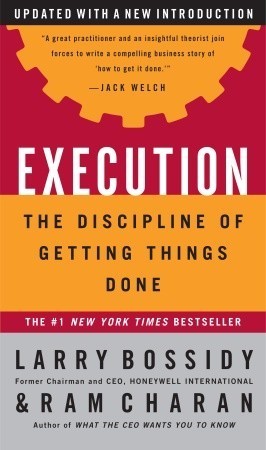More on this book
Community
Kindle Notes & Highlights
Read between
April 28 - June 18, 2020
People change them only when new evidence shows them persuasively that they’re false.
Behaviors are beliefs turned into action. Behaviors deliver the results. They’re where the rubber meets the road.
changing behavior is linking rewards
If a company rewards and promotes people for execution, its culture will change.
It is similar to the “vitality curve” Jack Welch introduced at GE to differentiate “A,” “B,” and “C” players.
You should increase the population of A-players,
You should remove the nonperformers.
Linking rewards to performance is necessary to creating an execution culture,
but it’s not enough by itself.
Other leaders design rewards for new behaviors of execution but implement them brutally.
They don’t coach. They don’t teach people to break a major concept down into smaller critical tasks
They don’t conduct the dialogues that surface realities, teach people how to think, o...
This highlight has been truncated due to consecutive passage length restrictions.
The missing part of the equation lies in what we call the social software of execution.
The hardware includes such things as organizational structure, design of rewards, compensation and sanctions, design of financial reports and their flow.
Social Operating Mechanisms.
formal or informal meetings, presentations, even memos or e-mail exchanges—anywhere that dialogue takes place.
First, they’re int...
This highlight has been truncated due to consecutive passage length restrictions.
create new information flows and new working relationships.
Second, Social Operating Mechanisms are where the beliefs and behaviors
You cannot have an execution culture without robust dialogue—one
It fosters creativity—most
Robust dialogue starts when people go in with open minds.
Informality is critical to candor. It was one of Jack Welch’s bywords. Formality suppresses dialogue; informality encourages it.
Informality gets the truth out.
robust dialogue ends with closure.
people agree about what each person has to do and when.
Dialogue alters the psychology of a group.
Some leaders may be short on the emotional fortitude required to invite disagreement without getting defensive.
“The culture of a company is the behavior of its leaders.
changing the behavior of its leaders.
To build an execution organization, the leader has to be present to create and reinforce the social software
with the desired behaviors and the robust dialogue.
Success in executing a cultural change depends first and foremost on having the right people.
Having the Right People in the Right Place
the right people for the right jobs.
What they’re overlooking is that the quality of their people is the best competitive differentiator.
people who understood how to execute his business model superbly.
If you look at any business that’s consistently successful, you’ll find that its leaders focus intensely and relentlessly on people selection.
you cannot delegate the process for selecting and developing leaders.
One of the first things I did was to visit the company’s plants, meet the managers, and get a feel for their individual capabilities.
The next step was to vigorously recruit more able people—not
Executive development needs to be a core competency.
I evaluated not only my direct reports
also the direct reports of direct reports,
organization: you hire a talented person, and they will hire a talented person.
comfortable,
rather
have better...
This highlight has been truncated due to consecutive passage length restrictions.
may not have the courage to discriminate between strong and weak performers and ta...
This highlight has been truncated due to consecutive passage length restrictions.
The leaders aren’t personally committed to the people process and ...
This highlight has been truncated due to consecutive passage length restrictions.


